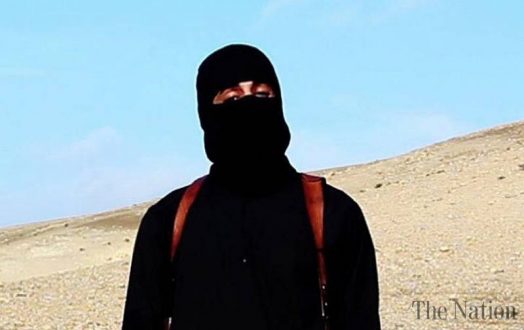Behind radicalization
The Western press has been busy over the last few weeks, with its repetitive if not dogmatic, biased and reductionist commentary on Mohammad Emwazi known as ‘Jihadi John’, the British Kuwaiti Muslim who has somehow ended up being an executor for the militia movement ISIS. Naturally many questions emerge, such as how an educated man could end up in the clutches of ISIS? What would motivate such a person to travel to Syria and to become an executor for this militia movement? The Western narrative is simple to say the least, in that this young man was radicalized by Islamic ideology, which created within him much disgust and hatred for the West leading him to shift to Syria and do what he has done. However, this narrative seems to be missing an important component that is the context, which would help us understand the motivation behind ‘Jihadi John’s’ transformation and get to the bottom of what is the driving force behind radicalization.
A lot of light has been shed on ‘Jihadi John’s’ transformation by the Muslim Advocacy group, known as CAGE, which had been in correspondence with him for the last 4 years and by making this email correspondence public, CAGE has been able to present clearly the context, which has deliberately been hidden by the media and political class. As a result, CAGE has itself faced the brunt of the British state, with its bank account and assets frozen. So what exactly was the information that the British state wanted to hide from the public that CAGE has exposed; through which CAGE has strengthened the argument that this process of radicalization is driven by externalities such as foreign policy, Islamophobia and mistreatment of Muslims by state apparatuses rather than Islamic ideology? These externalities need to be examined if one is serious in uprooting the causes of political violence that we witness.
According to CAGE, ‘Jihadi John’ had found a job in Kuwait, the country of his birth and had made plans to marry, so had set up a new life for himself and was looking forward to moving on with his life. On his way to Kuwait he was stopped at Heathrow by M15 personnel and interrogated for 6 hours. In this process, he was mistreated, thrown to the ground, pushed against the wall, his belongings were searched and all the information from his phone was taken. After this ordeal, he was released, with a promise to board a flight the next day. On his arrival to the airport, he realized that his visa had been refused by the airlines and by contacting the Kuwaiti embassy he was to find out that M15 had been instrumental in his visa request being turned down to travel to Kuwait. On top of this, he faced consistent harassment from M15, with threats to his life if he did not become an informant for the intelligence services. The email correspondence documents how ‘Jihadi John’ would feel so suffocated and isolated by the harassment he was facing and with no one to turn to, that he contemplated committing suicide. This was the state of his mind, or the extent to which he had been pushed by the M15. Now, having understood this, did Islamic ideology play a part in the anger and frustration that was built up in the young man? Did Islamic ideology motivate him to join ISIS? Did Islamic ideology drive him to Syria? It seems that the externalities that the young man had experienced over a four year period were the fundamental motivating factors and driving forces that led him to Syria and joining ISIS. However, quite conveniently, this context and paradigm has been completely missed by the Western media and political class, which has come out in defence of the intelligence services, which is not completely surprising as that would in effect expose the state itself and its involvement in radicalization.
These external causes of radicalization, in particular foreign policy, use of power, mistreatment and Islamophobia have all been well documented over the last 14 years, with academics and practitioners such as Marc Sageman and Noam Chomsky arguing that these externalities must be examined if one is to stop radicalization. For example, Professor Robert Pape, the author of the book ‘Dying to Win; The Strategic Logic of Suicide Terrorism,’ and present head of the project on Security and Terrorism at the University of Chicago argues that Anti Americanism has been a pertinent driving force behind suicide terrorism around the world, after an examination of over 2000 suicide bombings since the 1980s. In a report by Professor Arun Kundnani entitled, “Rethinking Radicalization and Extremism,” he mentions that religious ideology doesn’t automatically lead to acts of violence, whereas the link between externalities and acts of violence seems to be much stronger based on empirical and statistical evidence. With all of this well grounded evidence present, we continue to see the same old narrative of Islamic ideology being at the root of global political violence. Closer to home here in Pakistan, the same narrative on radicalization is spun, with civil society continuously laying siege to Mosques and Mullahs, with hardly any academic study to back their claims, whereas empirical evidence showing a direct correlation between the War on Terror and political violence is dismissed and brushed under the carpet. It becomes apparent that in this radicalization debate, there is no honesty, with a certain politically motivated and driven narrative being presented without space for an alternative. We have even seen it in Pakistan post the Peshawar Attack and elsewhere in the world. The narrative around ‘Jihadi John’ only proves my point.
THE NATION

